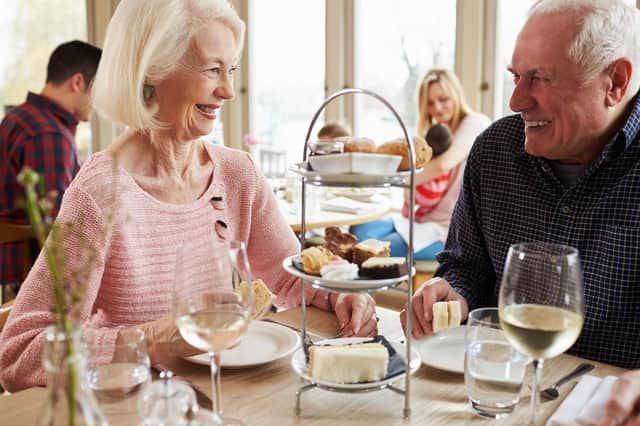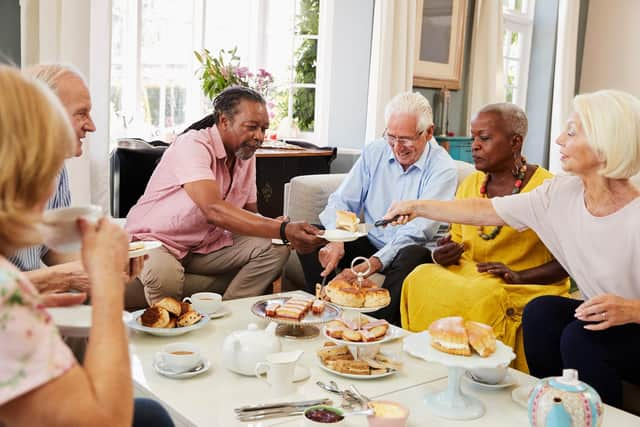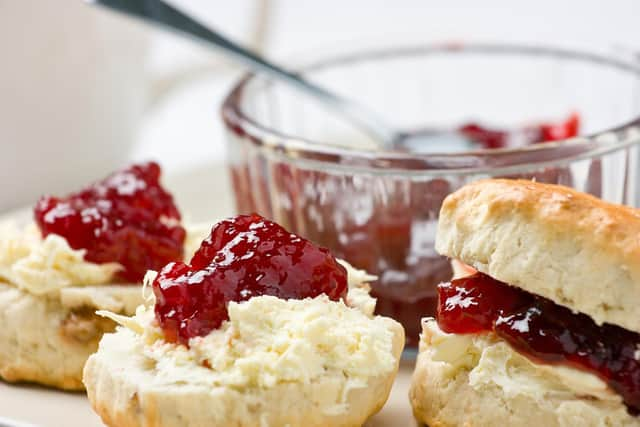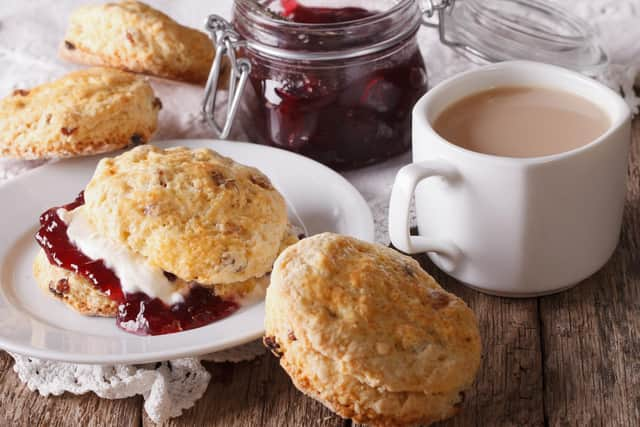Afternoon Tea Week in August is upholding a great British tradition


Afternoon Tea Week – a celebration of the small meal taken in the afternoon – takes place during the second full week in August.
Steve Cain examines the origins of afternoon tea, the etiquette surrounding it and how it has changed, evolved and been adapted over the years.
Advertisement
Hide AdAdvertisement
Hide AdAs the lyrics of the Jack Buchanan song say, “there isn’t any roar when the clock strikes four, everything stops for tea.”


The custom of taking afternoon tea is nothing new, but it has reached new heights of popularity during the twenty-first century.
During the nineteenth century, the evening meal in the households of the upper-classes was served fashionably late at around 8pm – a long time on from the light luncheon that was eaten at around midday.
Anna, Duchess of Bedford, often felt weary and worn-down by mid-afternoon and started to take tea, bread and butter, and cakes in her room to keep the hunger pangs at bay.
Advertisement
Hide AdAdvertisement
Hide AdAfter a while, she decided to invite friends to join her and, lo and behold, a tradition was born.


During the 1860s, upper class and society ladies would dress up in full-length gowns, gloves and hats for this fashionable social event.
Afternoon tea was usually served in the drawing room between four and five o’clock.
It became even more popular when Queen Victoria herself began to host “tea receptions.”
Advertisement
Hide AdAdvertisement
Hide AdThese events could host anything from a close collection of friends to a couple of hundred of society’s most important faces.


They were also the precursor to today’s Royal Garden Parties, the first of which was hosted during Victoria’s reign and was called a “breakfast”, despite the fact that it was held in the late afternoon as current garden parties are.
The taking of afternoon tea gradually spread from the home and into society at large.
Tea rooms began to appear everywhere and, by Edwardian times, afternoon tea would be served in the lounges of luxury hotels and high-end department stores.
Advertisement
Hide AdAdvertisement
Hide AdOften, afternoon tea was accompanied by light music and sometimes even a little dancing.
A typical afternoon tea consists of tea grown in India or Ceylon, dainty crustless sandwiches (including, of course, thinly sliced cucumber sandwiches), scones with jam and clotted cream, cakes, pastries and biscuits.
It was believed that these sweet treats would help lift the spirits and bolster energy levels to see people through the rest of the day.
In the 1910s, Queen Mary outlined the perfect etiquette for afternoon tea.
Advertisement
Hide AdAdvertisement
Hide AdThese rules stipulated that the saucer stays on the table; when the cup stands on the saucer, the handle should be at the three o’clock position; milk should be added to the tea, not vice-versa, and don’t put your pinkie out when holding the cup!
She also disliked tea being over-stirred and was insistent that the food should be enjoyed in the correct order – savoury to sweet.
Many venues still adhere to this, serving the courses on a three-tiered stand with sandwiches on the bottom tier; scones, cream and preserves on the middle tier, and cakes and biscuits on the top.
However, there is one aspect of the event that remains contentious – should it be jam or cream on the scone first?
Advertisement
Hide AdAdvertisement
Hide AdThe answer depends on whether you’re enjoying a Devonshire Cream Tea or a Cornish Cream Tea.
In Devon, it is always cream first, whilst in Cornwall it’s jam first!
The present Queen, Elizabeth II, also takes afternoon tea, with her favourite sandwich fillings being cucumber with cream cheese and grated Sage Derby cheese and tomato.
She also insists that “jam pennies” are always included.
These were a treat that she was served in the nursery as a little girl and are made from lightly buttered bread and strawberry jam, made with Scottish strawberries from the gardens of Balmoral Castle. Instead of cutting the jam sandwich into squares or triangles, a circular cutter is used to stamp out little rounds.
Advertisement
Hide AdAdvertisement
Hide AdThey were called pennies after the size of the old English penny.
Her Majesty is also said to enjoy strawberries sprinkled with sugar and served with thick double cream. The royal afternoon tea is rounded off with a glass of Pimms.
The tradition of taking afternoon tea began to wane towards the end of the twentieth century, as the British began their love affair with coffee bars such as Starbucks, Costa Coffee and Esquires.
Ironically, it was the economic downturn of 2008 that is credited for the revival of afternoon tea that continues to this day.
Advertisement
Hide AdAdvertisement
Hide AdWith money tight in many households, housewives and stay-at-home mums were less able to afford to meet with friends for lunch in restaurants so, apparently, they began taking turns to host their social circle for an afternoon of tea, cakes and a little idle gossip.
Nowadays, afternoon tea is so popular that queues often circle the block outside the famous Betty’s Tea Rooms in Yorkshire, while Spas all over the country include afternoon tea as an integral part of any pamper package.
Hotels, department stores and garden centres also now offer afternoon teas, too. Even brides on a budget are opting to serve afternoon tea at wedding receptions as opposed to the traditional formal sit-down meal.
First celebrated in 2018, “Afternoon Tea Week” taps into the British tradition of taking afternoon tea.
Advertisement
Hide AdAdvertisement
Hide AdIt aims to encourage people to commit, for the length of a week, to taking a pause in the afternoon to enjoy hot tea, some tasty treats and a bit of elegance and pomp.
Those who really want to go all out are encouraged to organise an afternoon tea for friends and family or, alternatively, find a local venue which serves afternoon tea and make a reservation.
The traditional afternoon tea menu has been adapted significantly over the years and many venues now offer champagne or prosecco as an optional extra to make the occasion that little bit more special.
Many charities also use the concept of afternoon tea as the basis for fundraising events. These include the Macmillan Cancer Support Coffee Mornings and the Alzheimer’s Society Cupcake Day.